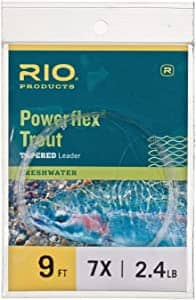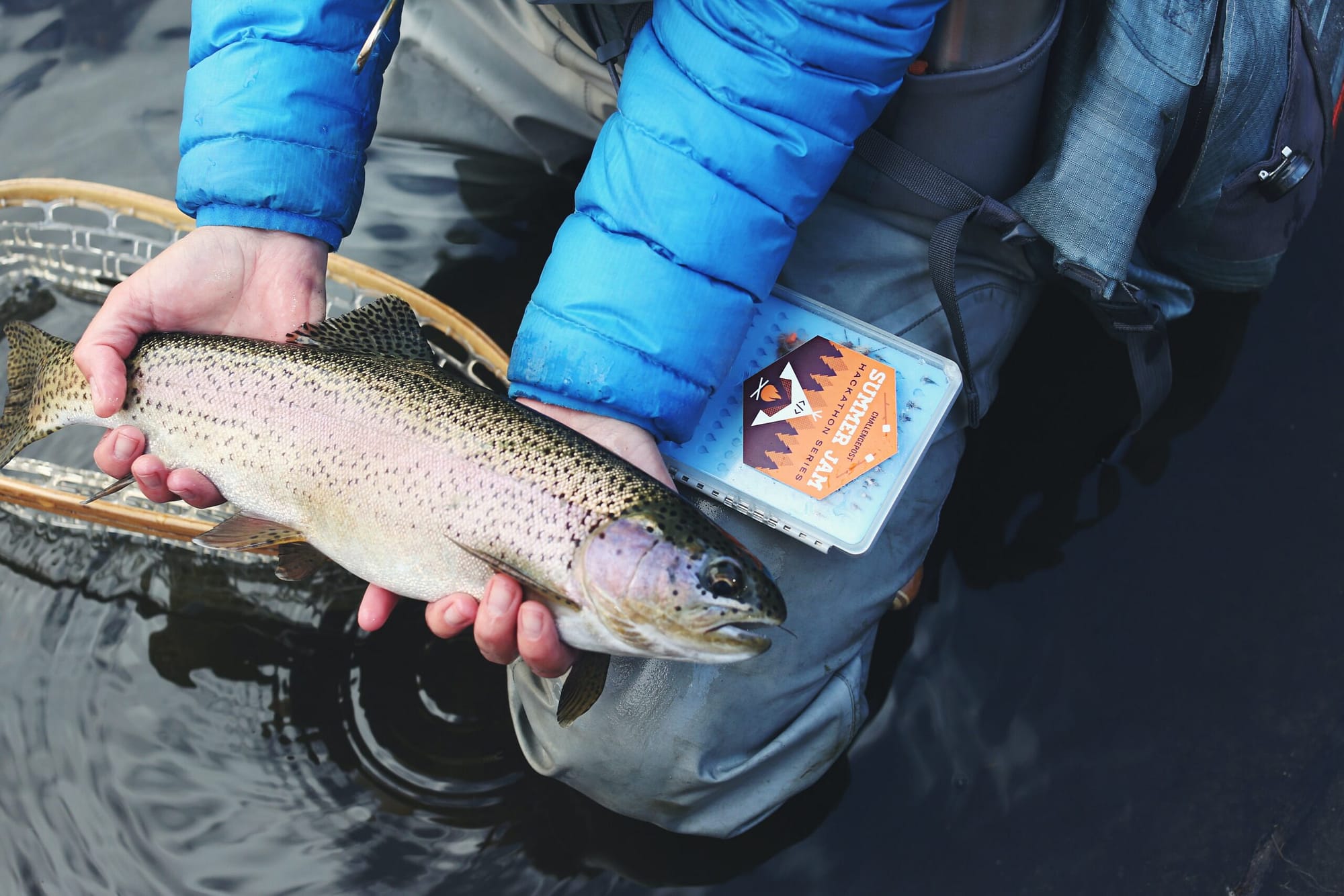A leader in fly fishing is a length of clear fishing line that is attached to the end of the fly line and extends to the fly. The leader is tapered, meaning it is thicker at the end attached to the fly line and becomes progressively thinner toward the end that attaches to the fly. The purpose of the tapered leader is to help transfer energy from the fly line to the fly, allowing for a smooth and accurate cast.
Leaders come in various lengths, thicknesses, and materials, depending on the fishing conditions, the size of the fly, and the species of fish being targeted. The leader can be made of monofilament, fluorocarbon, or a combination of both.
Leaders can be purchased pre-tapered, or they can be custom-tapered by the angler by tying multiple sections of fishing line together, each section slightly thinner than the previous one.
Overall, the leader plays a crucial role in fly fishing and can greatly impact the success of a fly fishing trip. A well-chosen and properly tapered leader can help make casting easier and improve the presentation of the fly to the fish.
Choosing the right leader for fly fishing is crucial for successful fly fishing. Here are some factors to consider when choosing the right leader for fly fishing:

Rio Powerflex Trout Fly Fishing Leaders
Includes a 6-Pack of RIO Powerflex 9FT leaders. Feature a powerful butt section that provides unsurpassed turn over for effective wind penetration and to easily cast streamers and indicator rigs.

Scientific Anglers Absolute Fluorocarbon Leader
Scientific Anglers Absolute Fluorocarbon Leader 1-Pack 9′ 0X. Type: Freshwater Saltwater Species: Bass Bonefish Permit Steelhead Trout.
Fishing conditions: The fishing conditions play a significant role in choosing the right leader. If you are fishing in clear, calm water, a longer, thinner leader will be appropriate. If you are fishing in fast, turbulent water, a shorter, thicker leader will be more effective.
Fly size: The size of the fly you are using will also affect the choice of leader. A larger fly will require a thicker leader to support the weight of the fly and to cast it properly.
Fish species: The species of fish you are targeting will also influence the choice of leader. Different fish have different feeding habits, and the leader choice should match the species you are trying to catch.
Fly line weight: The weight of your fly line will also affect the choice of leader. Heavier fly lines require thicker leaders, while lighter fly lines require thinner leaders.
Skill level: Your skill level as a fly fisherman will also impact the choice of leader. If you are a beginner, a thicker, shorter leader will be easier to handle. If you are an experienced angler, you may prefer a thinner, longer leader for more precise casting.
Overall, the right leader for fly fishing is a combination of these factors. Consider the fishing conditions, the size of your fly, the species of fish you are targeting, the weight of your fly line, and your skill level when choosing the right leader for your fly fishing needs.
Leader lengths, thicknesses, and materials
Leaders come in a variety of lengths, thicknesses, and materials, and choosing the right leader depends on several factors, including the fishing conditions, the size of the fly, and the species of fish being targeted. Here are some common options:
- Length: Leaders typically range from 7.5 feet to 12 feet in length, with 9 feet being the most common length. Shorter leaders are easier to cast in tight quarters and in windy conditions, while longer leaders provide better presentation and delicacy, especially in clear water.
- Thickness: The thickness, or diameter, of the leader varies along its length, and is measured in “X” ratings, with higher numbers representing thinner diameters. For example, a 6X leader is thinner than a 4X leader. Thicker leaders can handle heavier flies and larger fish, while thinner leaders provide better presentation and are less visible to fish.
- Materials: Leaders can be made of monofilament, fluorocarbon, or a combination of both. Monofilament leaders are the most common and are available in a range of stiffnesses and strengths. Fluorocarbon leaders are more expensive but offer greater invisibility in the water and are more abrasion-resistant. Some anglers prefer to use a combination of monofilament and fluorocarbon, with the thicker, stiffer monofilament used for the butt section and the thinner, more supple fluorocarbon used for the tippet section.
In general, it’s a good idea to choose a leader that matches the weight of your fly line, and to taper the leader down to a thinner tippet section near the end. This allows for a smooth transfer of energy from the fly line to the fly, resulting in better casting accuracy and presentation.




